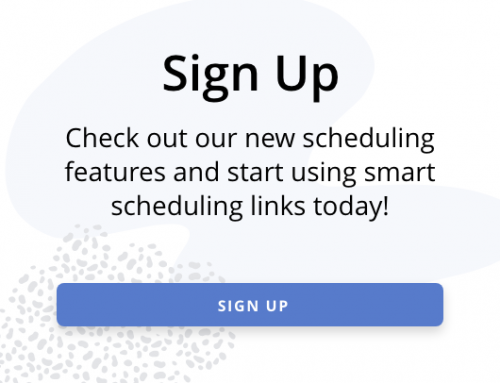

You already know the problem. Your roadmap looks tidy in Jira or Linear, then delivery slips–because priorities float, meetings collide, and nobody’s calendar matches the plan. That gap between intent and time is where velocity dies. The fix is not another status doc.
It is wiring your roadmap directly to your Calendar so time, teams, and tasks move in one system. Do that well and you’ll ship faster without burning weekends.
What the experts are saying
In building and coaching product teams, I keep returning to pragmatic, boringly reliable workflows.
- Priya Desai, product operations lead at a Series C SaaS, put it simply: “If it isn’t on the calendar, it won’t ship.”
- Marco Liu, PM at a logistics platform, adds that his team “ties every milestone to a time block and an owner so ‘slippage’ becomes visible the day it happens.”
- Hannah Ortiz, engineering manager and open source maintainer, warns of the tradeoff: “Automation helps, but over-automate and you’ll drown in noisy invites.” The pattern holds. Calendar plumbing accelerates delivery, but you must tune the signal.
1) Milestone-to-release blocks
Translate each roadmap milestone into a named all-day calendar block on the intended release date, then auto-fold upstream work into hold-to-schedule events. In Jira or Linear, tag the epic with the release date; use Zapier or Make to create the event in a shared Release Calendar. When we did this on a data product, we cut planning latency from 9 days to 3 because deadlines were visible to execs, not just inside an issue tracker. Visibility pulls risk forward.
2) Capacity-aware sprint planning
Stop picking points in a vacuum. Pull real PTO, holidays, and recurring meetings from Google Calendar or Outlook into your sprint planning sheet. Tools like Tempo, Toggl, or Reclaim.ai can overlay focus time vs meetings. Plan velocity from “net maker hours,” not story points alone. You’ll avoid the classic 30% overcommit where half your sprint lives in standups and interviews. If you can’t get exact data, a simple 60% maker-time assumption is a safer default.
3) Auto-create focus time for epic work
When an epic moves to “In progress,” create recurring focus blocks for each assignee during their preferred maker hours. Clockwise or Reclaim.ai can place these intelligently. Keep them 60–90 minutes and lock them as “busy” with a clear title like “Epic A123 focus.” I’ve seen this single change reduce context-switching complaints by half in two weeks. Protecting time is cheaper than adding headcount.
4) Decision review holds
Most delays hide in decision wait states. For any roadmap item with design, legal, or security reviews, pre-book 2–3 “decision holds” on reviewers’ calendars during the implementation window. If the artifact is ready, use the hold; if not, release it back. This keeps critical reviewers from becoming accidental blockers.
Alternate path: if reviewers resist holds, create a weekly 45-minute “fast track” review clinic with a rotating chair.
5) Cross-team dependency anchors
When your epic depends on another team’s API or schema, create a shared “dependency anchor” event owned by both teams with the target handoff date and Slack channel in the description. Update the anchor as the source team’s status moves. The anchor prevents the classic “we thought you knew” spiral because the calendar reminds both sides of the handshake date.
6) Roadmap-to-demo rhythm
Tie each roadmap theme to a recurring demo cadence and never slip it. For example, first and third Thursdays at 2 p.m. for “Acquisition” stream, second and fourth for “Activation.” Auto-pull top 3 shipped items from GitHub or Linear into the invite. One team I worked with lifted engagement by 40% when the invite always included the three bullets that would be shown live. Demos are accountability with receipts.
7) Backlog triage hour
You won’t ship faster if your backlog rots. Book a weekly 60-minute triage on the product trio’s calendars with a fixed input: newest 20 tickets by age and impact. Triage means decide, not discuss. Close, delegate, or schedule. If you need more than 60 minutes, your intake is broken. This ritual keeps roadmap scope believable and protects sprints from late scope creep.
What to triage each week:
Oldest items by age
Newest high-impact requests
Blockers tagged “needs decision”
8) Calendar-driven rollout playbook
Link your release checklist to a calendar template. When you set a release date, auto-spawn events for code freeze, release notes draft, support enablement, go-no-go, and feature flag ramps. On a payments feature, this calendarized playbook cut handoff misses by 18% across three releases because marketing and support always knew when to act. If your org hates templates, store a single “Release Runbook” event you duplicate per release.
9) On-call and reviewer rotations tied to roadmap peaks
Map your roadmap’s “heavy weeks” and align on-call ownership and code reviewers to those peaks. Create a repeating calendar rotation that assigns who reviews performance PRs or who owns data migrations in the week before a major drop. This avoids swarms where the same two people get hammered every cycle. Alternate path if headcount is thin: declare “no-meeting 2 days” before major migrations to create reviewer bandwidth.
10) Executive checkpoint windows
Executives rarely block projects out of malice. They block them by being unavailable. For each quarter’s bet, pre-book two 30-minute windows per month on your exec sponsor’s calendar titled “Roadmap checkpoint Q4 Bet A.” Send a two-slide update 24 hours before. If you don’t need the time, cancel early. This pattern slices decision turnaround from weeks to days because leaders expect the decision time and keep it open.
Adoption tips that stick
Start small. Pick one roadmap theme for the next six weeks and implement items 1, 3, and 8 only. Measure three things: planned vs shipped, review wait time, and calendar conflicts per engineer. Then expand. If your culture fears calendar spam, set a rule that anything auto-created must be titled consistently and deleted if stale for 48 hours.
A brief note on content habits and team hygiene
Your workflow gets even stronger when your team documents decisions cleanly and regularly audits what is working. Consistent structure and tone in internal docs reduce friction across stakeholders, the same way high-quality blog structure helps readers find value faster. That discipline matters more than novelty. Clear cadences and periodic audits keep strategies from drifting, just like content teams benefit from recurring content audits to stay competitive.
And yes, sometimes changing where you work boosts throughput. If your home office is chaos on Tuesday afternoons, book a library or coworking slot for sprint kickoffs so planning time is sacred. Treat your roadmap like an asset with clean records and thoughtful handoffs. It is easier to scale and easier to “sell” internally when the data is crisp.
Two small guardrails
Automation is a multiplier, not a manager. Review your automations monthly so you don’t create calendar debt. Also, let humans override the system. If a designer needs one long block to finish a prototype, give it to them and adjust. Your goal is faster shipping, not prettier schedules.
Closing
Roadmaps die when they stay theoretical. Tie yours to real time and the plan begins to defend itself. Start with release blocks, capacity-aware sprints, and a calendarized rollout runbook. You’ll surface risk early, make decisions faster, and protect maker time without adding bodies. Pick one stream, run the play for six weeks, and let the results fund the next improvement.
Featured Image: Photo by Christina Morillo: Pexels











Aaron Heienickle